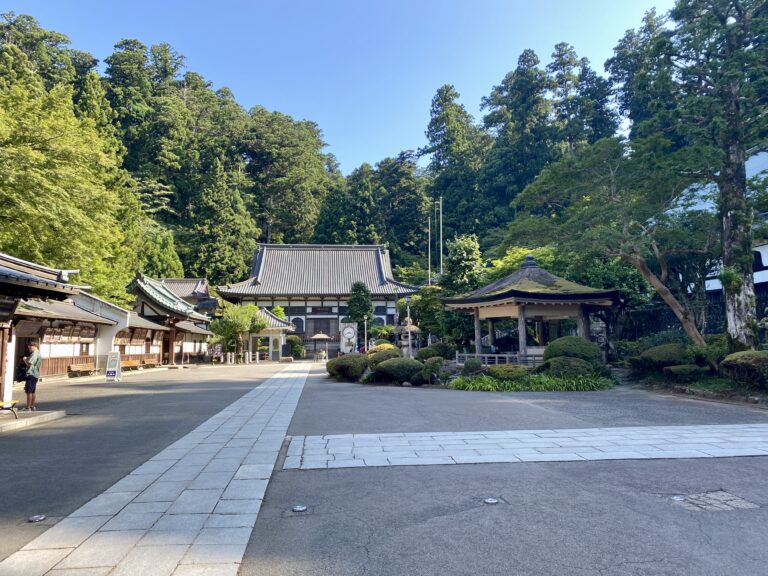If you have been to Gōra (or its vicinity), you will have noticed, high on a hillside across the valley, a forest clearing in the shape of the Chinese character “大”, read “dai”. The hillside is a flank of Myōjōgatake, one of the two summits explored in this article.
Take a bus from Hakone Yumoto Station to Miyagino-bashi. Signs to Myōjōgatake are clear except at the first cross-roads, where the ambiguously placed sign should actually be directing you to the right. After about ten minutes’ walk, the paved road changes to gravel, and a couple of minutes after that, the forest trail branches off.
The trail is steep and quite eroded, but it is easy to follow. It is even marked with a numbered peg every fifty metres, so you can easily monitor your progress. After less than an hour, at peg number 20, you find yourself at the anatomical left hand of the “大”. Nearby is a signboard giving the vital statistics and the history of this … well, to be frank, it was never anything but a tourist attraction. Every 16th of August it is set ablaze, to raise the summer-frazzled spirits of vacationers in the natural amphitheatre to which it is the stage. The trail to the ridge continues upwards to the right, but do spend a little time enjoying the Daimonji. The character’s meaning is, of course, “big,” but it’s only when you get inside it that you realise just how literally this has been taken. Walk fifty metres along the left arm to the heart. This, with its vertiginous view down the two diverging legs, is a great place for a picnic. Not only can you see the dome-shaped central massifs of Hakone, but to your right is the sharp pinnacle of Kintoki-yama, and somewhere nearby, if you are lucky, Fuji-san will be towering over the caldera rim.
This in itself makes a satisfying day trip, but I recommend rejoining the trail and continuing to peg 29, where it joins the fairway-like ridge trail. The unimposing summit of Myōjōgatake is a minute’s walk to your right, marked by a well-weathered shrine. You can continue in this direction, leading eventually back to Yumoto Station, but if you have the time, you should double back, and follow the ridge trail for another hour and a half to the similarly named but taller Myōjingatake, for its truly spectacular view.
You may now find yourself looking covetously at the next peak—traffic-cone-like Kintoki-yama—but I recommend saving that for another day and retracing your steps until the left turn, down the outside of the caldera, towards Saijōji. It is a long and, in places, steep descent, but you’ll be rewarded in the early stages with good views out to sea.
Saijōji is a large temple complex set among ancient cedar trees, worthy of a day trip in its own right. It is famous among other things for its collection of tengu geta (ogre sandals); close to the debouchment of the trail you will find an XXL pair in painted steel. If you feel you still haven’t had your exercise for the day, you should climb the 500 steps to the Okunoin; the last 200 steps are in a single dizzying flight.
The bus to Daiyūzan Station departs from close to the inevitable souvenir shops. Alternatively, you can walk; until you leave the forest, the footpath is segregated from the road.


